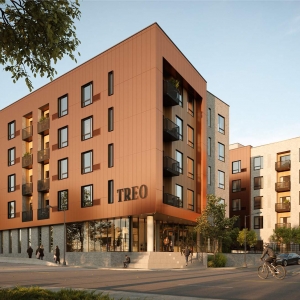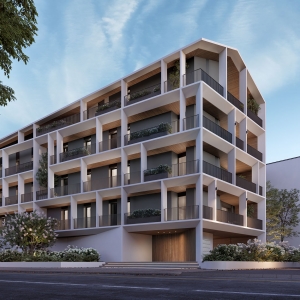A crucial asset for showcasing expertise in crafting immersive and lifelike visualizations of architectural projects, an architecture visualization portfolio is indispensable in the era of 3D modeling and visualization. This tool is essential for professionals like lighting designers, visualizers, and architects to effectively convey their design sensibilities and technical prowess to prospective employers or clients.
When compiling an architecture visualization portfolio, the primary objectives are to highlight a distinctive style, showcase proficiency in programs such as 3ds Max, Maya, Lumion, and Unity, and demonstrate storytelling skills. To create a comprehensive portfolio, follow these guidelines:
1. Curate a Diverse Collection of Visuals:
Select 10-15 of your finest renderings that encompass various project types, styles, and complexities. This should include schematic design visualizations, residential and commercial spaces, exterior and interior renderings, animated walkthroughs, VR environments, and day/night lighting studies. The diversity in your portfolio showcases adaptability.
2. Tell a Compelling Story:
For each project, guide viewers through the visual narrative you've constructed. Detail client needs, design challenges, ambiance goals, technical approaches, and articulate why your images successfully realize the envisioned architectural concept.
3. Showcase Technical Proficiency:
Feature images that emphasize skills such as photorealistic material rendering, accurate lighting, and realistic vegetation. In animations, illustrate smooth camera movements and seamless transitions. Include wireframes, modeling layers, and texture maps to reveal your technical workflow.
4. Select an Appropriate Presentation Format:
Physical portfolios remain relevant for in-person interviews. For digital portfolios, optimize images for web resolution and consider using platforms like Behance that allow for captions and effective project organization.
5. Reflect Your Unique Style:
While showcasing a broad range, maintain a consistent mood and design aesthetic in your visuals. For instance, construct a portfolio centered around retrofuturism or minimalism to distinguish your work.
6. Highlight Real-World Experience:
Showcase professional, internship, or academic projects, balancing student work with pieces from freelance engagements and collaborations. This combination emphasizes both potential and real-world experience.
7. Refine and Regularly Update:
As you acquire new clients and enhance your skills, substitute older renderings and animations with ones that represent your latest abilities. An architecture portfolio is a dynamic representation that is never truly complete.
By strategically curating projects and maintaining a consistent style, architecture visualization portfolios serve as tangible proof of your talents and vision, captivating potential employers or clients. Ensure your portfolio is tailored to align with the specific opportunities you aim to pursue next.
When compiling an architecture visualization portfolio, the primary objectives are to highlight a distinctive style, showcase proficiency in programs such as 3ds Max, Maya, Lumion, and Unity, and demonstrate storytelling skills. To create a comprehensive portfolio, follow these guidelines:
1. Curate a Diverse Collection of Visuals:
Select 10-15 of your finest renderings that encompass various project types, styles, and complexities. This should include schematic design visualizations, residential and commercial spaces, exterior and interior renderings, animated walkthroughs, VR environments, and day/night lighting studies. The diversity in your portfolio showcases adaptability.
2. Tell a Compelling Story:
For each project, guide viewers through the visual narrative you've constructed. Detail client needs, design challenges, ambiance goals, technical approaches, and articulate why your images successfully realize the envisioned architectural concept.
3. Showcase Technical Proficiency:
Feature images that emphasize skills such as photorealistic material rendering, accurate lighting, and realistic vegetation. In animations, illustrate smooth camera movements and seamless transitions. Include wireframes, modeling layers, and texture maps to reveal your technical workflow.
4. Select an Appropriate Presentation Format:
Physical portfolios remain relevant for in-person interviews. For digital portfolios, optimize images for web resolution and consider using platforms like Behance that allow for captions and effective project organization.
5. Reflect Your Unique Style:
While showcasing a broad range, maintain a consistent mood and design aesthetic in your visuals. For instance, construct a portfolio centered around retrofuturism or minimalism to distinguish your work.
6. Highlight Real-World Experience:
Showcase professional, internship, or academic projects, balancing student work with pieces from freelance engagements and collaborations. This combination emphasizes both potential and real-world experience.
7. Refine and Regularly Update:
As you acquire new clients and enhance your skills, substitute older renderings and animations with ones that represent your latest abilities. An architecture portfolio is a dynamic representation that is never truly complete.
By strategically curating projects and maintaining a consistent style, architecture visualization portfolios serve as tangible proof of your talents and vision, captivating potential employers or clients. Ensure your portfolio is tailored to align with the specific opportunities you aim to pursue next.





